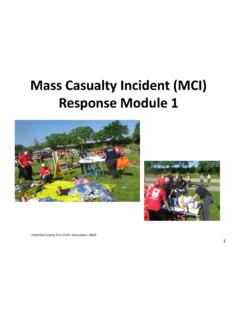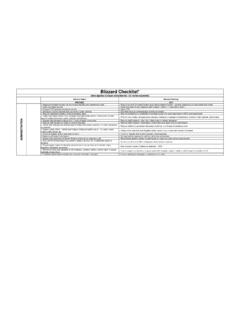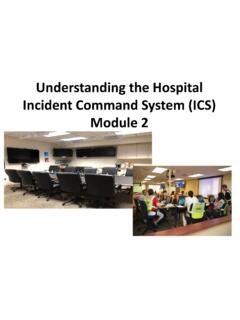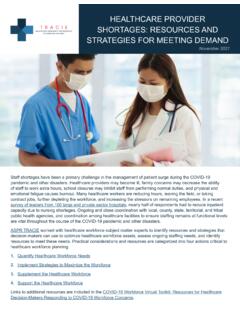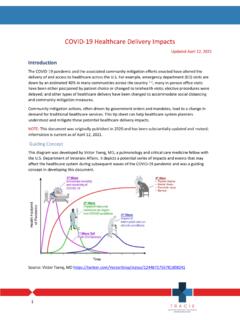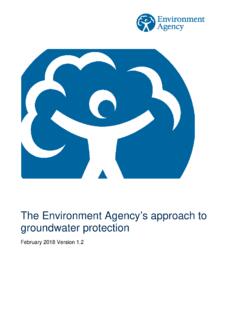Transcription of COVID-19 After Action Report Resources and Examples
1 1 COVID-19 After Action Report Resources and Examples Current as of December 30, 2021 This Department of Health and Human Services (HHS) Office of the Assistant Secretary for Preparedness and Response (ASPR) Technical Resources , Assistance Center, and Information Exchange (TRACIE) document includes sample considerations that healthcare entities can utilize when documenting their ongoing After Action Report (AAR) process for COVID-19 (gleaned from various sources). It also provides sample COVID-19 AARs that are currently available to the public.
2 ASPR TRACIE reviewed several documents, including those in our COVID-19 Resource Page, for the development of this document. The ASPR TRACIE Exercise Program Topic Collection (not COVID-19 specific) was also reviewed and is relevant to this document. It is important to note that the HHS ASPR Exercise, Evaluation, and After Action Division (E2A2) noted that the "industry standard" is to use the Homeland Security Exercise and Evaluation Program (HSEEP) AAR template. A sample AAR template is available from the Texas Division of Emergency Management for COVID-19 .
3 Sample Participant Feedback Forms (Burn, Pediatric) have been designed as AAR surveys for previous exercises and can serve as a guide for similar questioning for COVID-19 . Note that the AAR should help the organization in updating their emergency preparedness program ( , for long-term care facilities annually). For an AAR to be useful, it should identify both strengths and weaknesses of the response as well as how those will be either reinforced in future plans / tactics or corrected as required. The more specific an AAR is, the greater value it will have during future events.
4 It is important to note that the COVID-19 pandemic is different from a conventional mass casualty event in many ways. Caution should be exercised when considering changes to emergency operations and surge plans in context so that the plan functionality is preserved or enhanced for no-notice events as well. 2 Sample Elements to Include/Consider for COVID-19 AAR Emergency preparedness planning o Emergency operations plan, continuity of operations plan, and business continuity plan reviews. Are these plans updated routinely and on an as needed basis?
5 Did you assess other emergency plans ( , fire, evacuation, shelter in place) for pandemic implications? How do evacuation or access control plans change during an infectious disease emergency? o Information sharing/situational awareness. What are the most valuable/successful mechanisms used by your facility and among partners to share information? How is your facility integrated with public Joint Information Systems (JIS) in your community? Do you receive health alerts directly from the Centers for Disease Control and Prevention (CDC) or indirectly through your state or local health department, healthcare coalition, association, or other entity?
6 Who receives state and Federal alerts and how is this information shared? How do you maintain emergency point of contact information for your patients or residents, as well as internal staff and external partners? How was information shared and communicated regionally for healthcare? What were the most effective means and the most needed content? o Coordination with state, local, healthcare coalitions, and community partners. How actively does your facility participate in the activities of your region s healthcare coalition?
7 What information technology (IT) solutions do you use for information sharing and coordination and did you modify them during the pandemic? How were MOCC (Medical Operations Coordination Cells) utilized in your area to load-balance or direct patients requiring critical care? What are opportunities to implement or strengthen these mechanisms in the future? Were the assumptions about roles and responsibilities during a pandemic at the regional coordination level validated or not? What changes are needed to assure regional healthcare coordination for future events?
8 Response o Incident management. What structure did you use for incident management in your facility? Was this altered during the pandemic response? How did you maintain the Incident Command System (ICS) over a long duration event? Did you use incident Action planning (IAP) for your daily ICS? What could be improved in this process? 3 How did the ICS integrate (or not) with your daily authorities and operational coordination ( daily staffing huddles, executive leadership teams)? How engaged was executive leadership? Did you anticipate this level of engagement and was there value added or alteration from how you have trained, drilled and exercised in the past?
9 How will you define the recommended roles of executive leadership for incident management in the future? o Communications/information sharing. Did you adjust your information sharing during response ( , frequency, who to share information with, mechanisms for sharing)? What was the most effective means and platform for sharing information with staff? What changes may be needed for future events both in terms of platforms and content/responsibility for communication? What was the most valuable/important information shared among partners?
10 What key data points did you routinely track? Were these identified as key elements of information prior to the pandemic or recognized as a need during the pandemic? Were these shared with regional partners? How were policy changes coordinated ( , facility access policies, employee travel policies) for your organization/healthcare system? Are any changes needed to assure consistency? How did you communicate new policies and procedures to your staff, patients/residents, and families or responsible parties? What challenges did you encounter in meeting new Federal reporting requirements?
